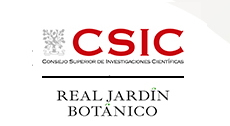Scientific Area
Whole-soil microbial communities from shaded coffee plantations and montane forest fragments offer similar benefits to coffee and
ID: 613 / 312
Category: Abstract
Track: Pending
Proposed Symposium Title: Whole-soil microbial communities from shaded coffee plantations and montane forest fragments offer similar benefits to coffee and
Authors:
Camila Pizano1 and Scott A. Mangan2
Affiliations: 1Department of Biology, Lake Forest College, Lake Forest, Illinois 60045 USA 2Department of Biological Sciences, Arkansas State University, Jonesboro, Arkansas, USA
Abstract:
Soil microbial communities are among the most species-rich components of terrestrial ecosystems and can influence plant productivity and quality by establishing direct interactions with plant roots (pathogens, parasites, root herbivores, mycorrhizae) and by locking or liberating nutrients into the soil. However, agricultural practices such as tillage and fertilization can reduce soil community diversity in general, reduce mycorrhizal inoculum potential, or modify the abundance of soil microorganisms such as arbuscular mycorrhizal fungi (AMF). In this study we exposed seedlings of coffee (Coffea arabica), and three native shade tree species (Albizia carbonaria, Cordia alliodora and Inga densiflora) to contrasting soil types and sterilized vs. whole-soil live microbial communities from long-term fertilized shaded coffee plantations and montane forest fragments in Colombia. Surprisingly, plants showed a limited response to contrasting soil types, but benefited from live soil microbial communities, and their growth differed across varied combinations of soil type and inoculum source. Fast-growing plant species (A. carbonaria and C. alliodora) benefited the most from inoculation with live soil organisms, but A. carbonaria benefited the most from soil microbes coming from shaded coffee plantations. In contrast, shade-tolerant species (C. arabica and I. densiflora) performed similarly across different live inoculum sources, but growth of I. densiflora with a live inoculum was higher in soils containing higher organic matter, and N and P contents. AMF colonization varied across species, being the lowest in C. arabica, but similarly high for plants inoculated with soils coming from shaded coffee plantations and forest fragments. These results suggest that agricultural systems that maintain intermediate plant diversity and employ low soil disturbance, despite fertilization, maintain soil microbial communities similar to those present in more diverse natural habitats.




